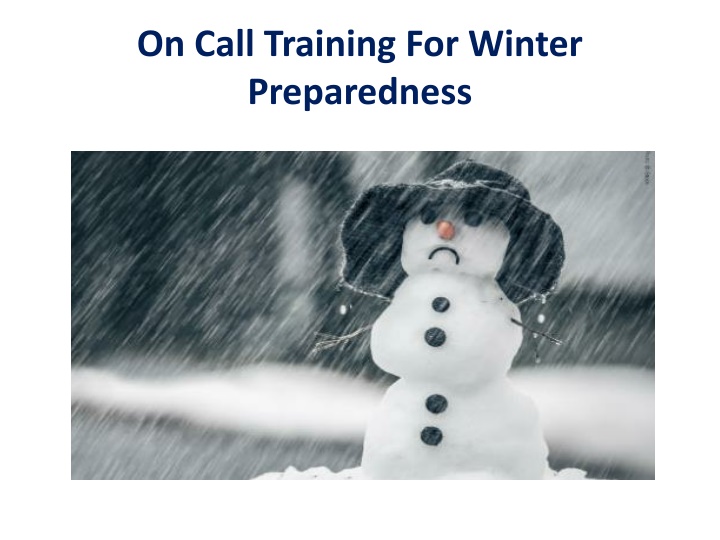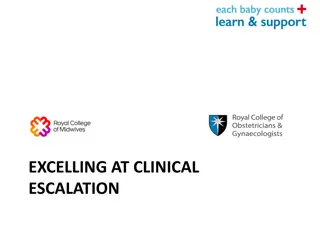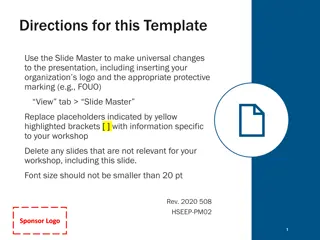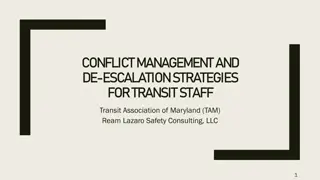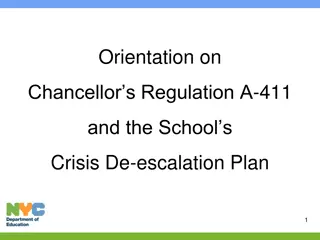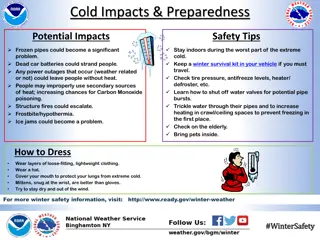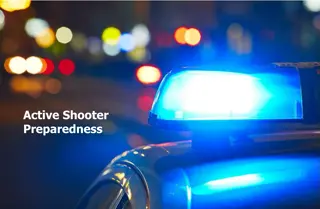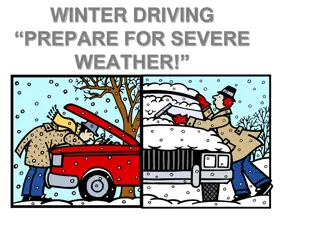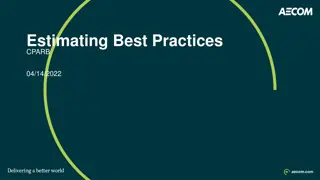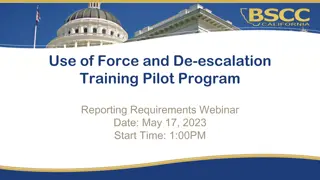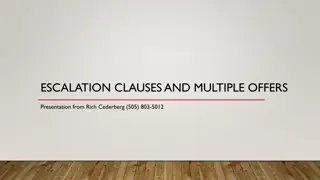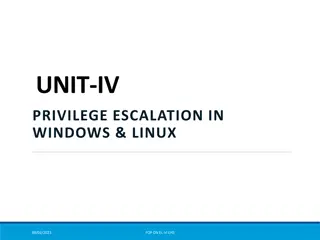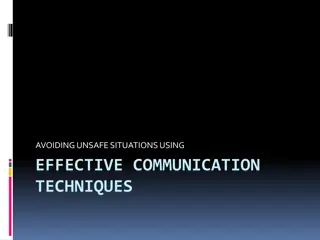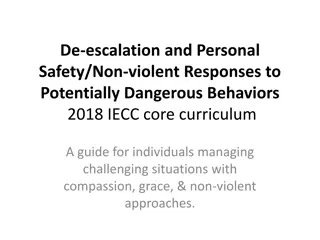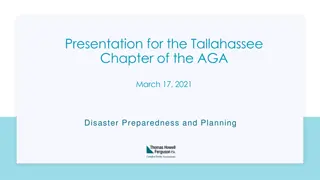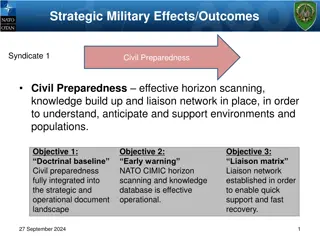Winter Preparedness Training for Strategic Leadership in Escalation Situations
The Winter Preparedness Training focuses on preparing executive leads and on-call managers to provide strategic leadership during extreme periods of escalation. The training covers roles and responsibilities, strengths and weaknesses, escalation processes, teleconference chairing skills, partner collaboration, and improving patient outcomes. It also introduces the Joint Decision Making Model (JESIP) for effective decision-making in various situations, emphasizing intelligence, strategy, and action. Tools and techniques such as using agendas, data consistency, action cards, and defined roles are highlighted to enhance preparedness.
Download Presentation

Please find below an Image/Link to download the presentation.
The content on the website is provided AS IS for your information and personal use only. It may not be sold, licensed, or shared on other websites without obtaining consent from the author.If you encounter any issues during the download, it is possible that the publisher has removed the file from their server.
You are allowed to download the files provided on this website for personal or commercial use, subject to the condition that they are used lawfully. All files are the property of their respective owners.
The content on the website is provided AS IS for your information and personal use only. It may not be sold, licensed, or shared on other websites without obtaining consent from the author.
E N D
Presentation Transcript
On Call Training For Winter Preparedness
Aim To prepare executive leads and on call managers for strategic leadership in extreme periods of escalation
Outcomes Knowing your roles and responsibilities; Knowing your strengths and weaknesses; Knowing the escalation process at each stage; Applying skills and tools that will assist in chairing a constructive teleconference calls (if relevant); Ensuring partner collaboration, the effectiveness of escalation plans and the next steps to improve patient outcomes and experiences during periods of escalation;
Joint Decision Making Model (JESIP) This model is suitable for all decisions. It can be applied to spontaneous incidents or planned operations, by an individual or teams of people, and to both operational and non-operational situations. Decision makers can use it to structure a rationale of what they did during an incident/key event and why.
Three Primary Considerations for use of JESIP Joint Decision Making Model Intelligence: What is happening, what are the impacts, what are the risks, what might happen and what is being done about it? Situational awareness is having an appropriate knowledge of these factors. Strategy: What end-state is desired, what are the aims and objectives of the emergency response and what overarching values and priorities will inform and guide this? Action: What needs to be decided and what needs to be done to resolve the situation and achieve the desired end state?
Tools and Techniques Use an Agenda and Terms of Reference (NHSE SE OPEL Framework) Use consistency in style, expectations and process; Use accurate, timely and complete data from all partners (system dashboards/trust service reports that have agreed daily triggers and targets); Use NHSE SE OPEL Action Cards, NHSE SE Onward Care Procedure, Localised Winter Plans, Business Continuity Plans, Escalation Plans, Service Specifications; Ensure that roles and responsibilities defined; Maintain an robust action log with defined leads.
Key Skills Leadership; Analysis skills; Empowerment; Strategic thinking; Communication; Evaluation; Delegation; Recording;
Key Processes Shared situational awareness; Strategy, oversight and consistency; Decision making processes; Trust and ownership; Partnership working/collaboration; Prioritisation; Reviewing/Revisiting/Debriefing;
You as a Leader Individuals make decisions in different ways; Identify good ways of communicating/sharing; Shared decision making is the most effective by: Using a small bespoke group/advisory team; Gaining consensus; Having a clear plan/way forward; Revisit the outcomes/actions; This must be based on facts and evidence;
Command and Control Ask yourself: Do you sound like you are in command Do you sound like you are in control? Do you have confidence in your ability to resolve the issue? Do you behave like you are in command/control?
Barriers To Being Productive No agenda; No clear requests/handover from silver/tactical team; Lack of consistency and structure; Unprepared participants; wrong participants; Lack of information to inform decision making; No decision makers available; Lack of clarity in actions and roles and responsibilities; Lack of ownership and accountability; Lack of consistency in strategic management of call personnel;
Methods to Productive Calls 5 W s: What: What is the issue, is it validated? Where: Where is the impact? Why: Cause and consequence Who: Will take responsibility for the actions When: Will the actions be delivered? GROW: Goals: Are we trying to achieve? Target and trigger focussed Resistance: Factual and evidence based? Opportunities: To de-escalate how and when? Way : Forward and what will it take to achieve?
SBAR Handover tool Situation Briefly describe the situation succinct overview S Background Briefly state pertinent history what got us to this point? B Assessment Summarise the facts what is going on? A Recommendation What are you asking for what needs to happen next R
Debrief After every period of increased escalation carry out a debrief: What went well? What did not go so well? What would you do differently next time? What else can be done to ensure patients receive the best care and experience possible? Change behaviour and pattern .
Caution declaration of critical incident Acute trusts may declare an internal critical incident during times of great pressure where the level of disruption results in the organisation temporarily or permanently losing its ability to deliver critical services, patients may have been harmed or the environment is not safe requiring special measures and support from other agencies, to restore normal operating functions. And: Must reserve the declaration of a major incident for when an organisation requires the formal multi-agency response as defined within Local Resilience Forum (LRF) plans.
Inject Daily Reporting The Acute Trust and system are reporting OPEL 4; Other neighbouring organisations and systems are starting to escalate to OPEL 4 and there is generalised pressure across the regions; A severe weather warning has also just come in; Staffing across all health organisations is being affected by many being off sick with flu;
Please discuss: What will be your first action? Who will be leading the response to this? What are your individual roles and responsibilities? What command and control structure would be set up? What plans, framework, policies, procedures will you need? What impact will this have to your organisation What support would you require?
Next Steps Agree what improvements the Providers/CCG are now going to make to deliver strategic leadership in extreme periods of escalation; As a group - insist on briefing and preparation; As individuals take ownership!
